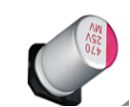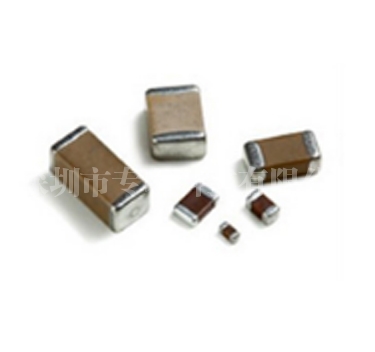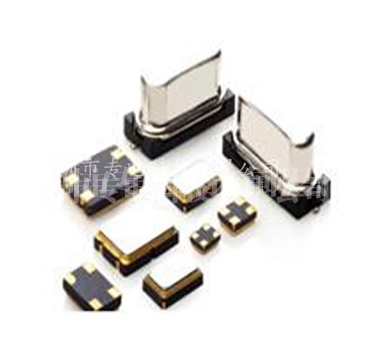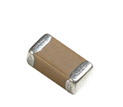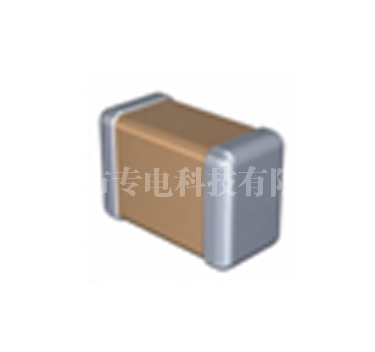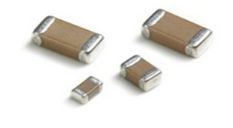The full name of solid capacitor is: solid aluminum electrolytic capacitor . The biggest difference between it and general capacitors (i.e., liquid aluminum electrolytic capacitors) is the use of different dielectric materials. The dielectric material of liquid aluminum capacitors is electrolyte, while the dielectric material of solid capacitors is conductive polymer materials.
In view of the many problems of liquid electrolytic capacitors, solid aluminum electrolytic capacitors came into being. Since the 1990s, aluminum electrolytic capacitors have achieved innovative development by using solid conductive polymer materials instead of electrolytes as cathodes. The conductivity of conductive polymer materials is usually 2 to 3 orders of magnitude higher than that of electrolytes. When applied to aluminum electrolytic capacitors, it can greatly reduce ESR and improve temperature and frequency characteristics; and because polymer materials have good processability, are easy to encapsulate, and are extremely The earth has promoted the chip development of aluminum electrolytic capacitors. Currently, there are two main types of commercialized solid aluminum electrolytic capacitors: organic semiconductor aluminum electrolytic capacitors (OS-CON) and polymer conductor aluminum electrolytic capacitors (PC-CON).
How to look at the positive and negative poles of solid capacitors :
Solid capacitors are formed on the inner surface of the anode. A very thin layer of aluminum oxide plays the role of dielectric in electrolytic capacitors. It has excellent dielectric constant e and unidirectional characteristics. When in contact with the electrolyte, this oxide film has excellent unidirectional insulation characteristics. This characteristic of the dielectric determines the unidirectional polarity application of general electrolytic capacitors.
Solid capacitors can be identified by their feet. The longer one is the positive electrode and the shorter one is the negative electrode. On the capacitor, the half with colored paint is the negative electrode. The term solid electrolytic or liquid capacitor refers to the material used for the cathode. The advantage of using electrolyte as the cathode is that the capacitance can be very large. However, the electrolyte is prone to volatilization and leakage in high temperature environments, which has a great impact on lifespan and stability. Solid-state capacitors use functional conductive polymers as dielectric materials, so they will not explode when energized when not used for a long time. Moreover, at low temperatures, due to the slow movement of electrolyte ions, the expected characteristics and functions will not be lost. Compared with liquid electrolytes, solid capacitors have superior characteristics such as environmental protection, low impedance, high and low temperature stability, high grain resistance and high reliability.
Advantages of solid capacitors:
1. High stability
Solid aluminum electrolytic capacitors can continue to operate stably in high temperature environments, and the use of solid aluminum electrolytic capacitors can directly improve motherboard performance. At the same time, due to its stable impedance over a wide temperature range, it is suitable for power supply filtering. It can effectively provide stable and sufficient power, which is especially important in overclocking.
Solid capacitors can still operate normally in high temperature environments and maintain various electrical functions. Its capacitance does not change by more than 15% across the entire temperature range, which is significantly better than liquid electrolytic capacitors. At the same time, the capacitance of solid electrolytic capacitors has basically nothing to do with its operating voltage, thus ensuring its stable operation in a voltage fluctuation environment.
2.Long life
Solid aluminum electrolytic capacitors have an extremely long service life (service life exceeds 50 years). Compared with liquid aluminum electrolytic capacitors, it can be regarded as "long-lived". It will not be broken down, and there is no need to worry about the liquid electrolyte drying up and leaking, which will affect the stability of the motherboard. Because there are no problems with liquid electrolytes, solid aluminum electrolytic capacitors make motherboards more stable and reliable.
Solid electrolytes will not evaporate, expand, or even burn like liquid electrolytes in high-heat environments. Even if the temperature of the capacitor exceeds its endurance limit, the solid electrolyte simply melts, which will not cause the metal shell of the capacitor to burst, making it very safe.
The operating temperature directly affects the life of electrolytic capacitors. Solid electrolytic capacitors and liquid electrolytic capacitors have significantly longer lifespans in different temperature environments.
3. Low ESR and high rated ripple current
ESR refers to the equivalent series resistance, which is a very important target for capacitors. The lower the ESR, the faster the capacitor charges and discharges. This function directly affects the decoupling function of the microprocessor power supply circuit. In high-frequency circuits, the advantages of the low ESR characteristics of solid electrolytic capacitors are more significant. It can be said that the low ESR characteristics at high frequencies are the watershed between the functional differences between solid electrolytic capacitors and liquid capacitors. Solid aluminum electrolytic capacitors have very low ESR and very small energy dissipation. Under high-temperature, high-frequency and high-power operating conditions, the extremely low ESR properties of solid capacitors can fully absorb the high-amplitude voltage generated between power lines in the circuit and prevent it from interfering with the system.



